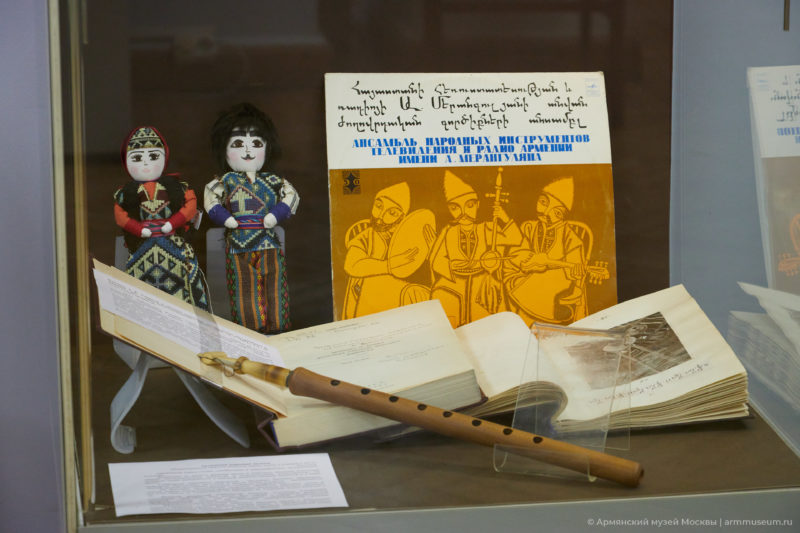by The Armenian Mirror-Spectator
MOSCOW — The exhibition Musical Folklore of the Peoples of the Commonwealth of Independent States (CIS) Countries has opened in the Russian State Library (RSL) as part of the programming for the Year of Folk Art and Cultural Heritage of the Commonwealth of Independent States. The exhibition introduces Armenia and its musical heritage through music well as decorative and applied art objects and the national musical instrument duduk provided by the Armenian Museum of Moscow.
The exhibition, which opened on January 25 within the walls of the Russian State Library, presents the most striking examples of musical folklore of the peoples of the CIS countries. The exposition is presented in the chamber hall of the Music Publications and Sound Recordings Department of the Pashkov House.
The importance of the event in strengthening cultural ties between the CIS member countries, among other things, is indicated by the number and rank of the guests who attended the opening of the exhibition. These are representatives of the diplomatic missions of the CIS countries in Moscow, the Ministry of Foreign Affairs of the Russian Federation, the CIS Executive Committee, the Interparliamentary Assembly of the CIS Member States, the Moscow House of Nationalities, the Union of Armenians of Russia, the Armenian Museum of Moscow and other national associations.
The traditional heritage of the Armenian people is represented at the exhibition by songs of Komitas, who laid the foundations of Armenian national music, songs of gusans [“minstrels”], and pieces for the traditional instruments saz, tar, kemanchi and duduk.
“The great Armenian composer Komitas (Soghomon Soghomonyan, 1869-1935) said that the people are the only creators to whom one should go and from whom one should learn. The Armenian people have created an original and diverse musical culture. The treasures of folk art — labor, household, ritual, love, lyrical, comic and other songs and dances — are remembered for their bright melodies, rhythms and profound content. At the exhibition, you can see collections of folk songs and dances arranged by such outstanding representatives of the song culture of Armenia as Christopher Kara-Murza, Alexander Spendiarov, Tatul Altunyan and others,” writes the website of the Russian State Library.
The exhibition opened with a concert, which clearly demonstrated the folklore traditions and modern culture of the participating countries of the event. So, on the stage of one of the halls of the Russian State Library, the singer and composer Marina Manasyan performed her own composition, the song Karmir Erg. Marina is called “the most sensual voice of new Armenian music.” In her work, she skillfully combines the Armenian language and Armenian and Eastern motifs with electronic music.
“The desire for good neighborliness is an important factor in the development of relations between the countries of the Commonwealth of Independent States. The common history and the memory of the path traversed by our ancestors act as a rallying basis for us. The functions of preserving and transferring memory and knowledge are assumed by organizations that carry out educational work. These are schools, educational institutions, libraries, museums, cultural centers — they are links of the same chain connecting generations. The Russian State Library and the Armenian Museum of Moscow and the Culture of Nations are among such links.
“Armenian-Russian friendship is indivisible. It has deep and strong roots, being a story of a spiritually close connection, full of pages of heroism and service to a common goal. All this determines the relations of our peoples to this day. And this is unchanging,” said Ruben Tsolakovich Grigoryan, founder of the Armenian Museum of Moscow and Culture of Nations, in his greeting sent for the opening of the exhibition.
In the CIS, 2022 has been declared the Year of Folk Art and Cultural Heritage, in connection with which numerous events dedicated to folk art and folklore will be held in CIS countries. One of them is the abovementioned exhibition, which can be seen until February 22, with a reader’s ticket to the RSL.

























































